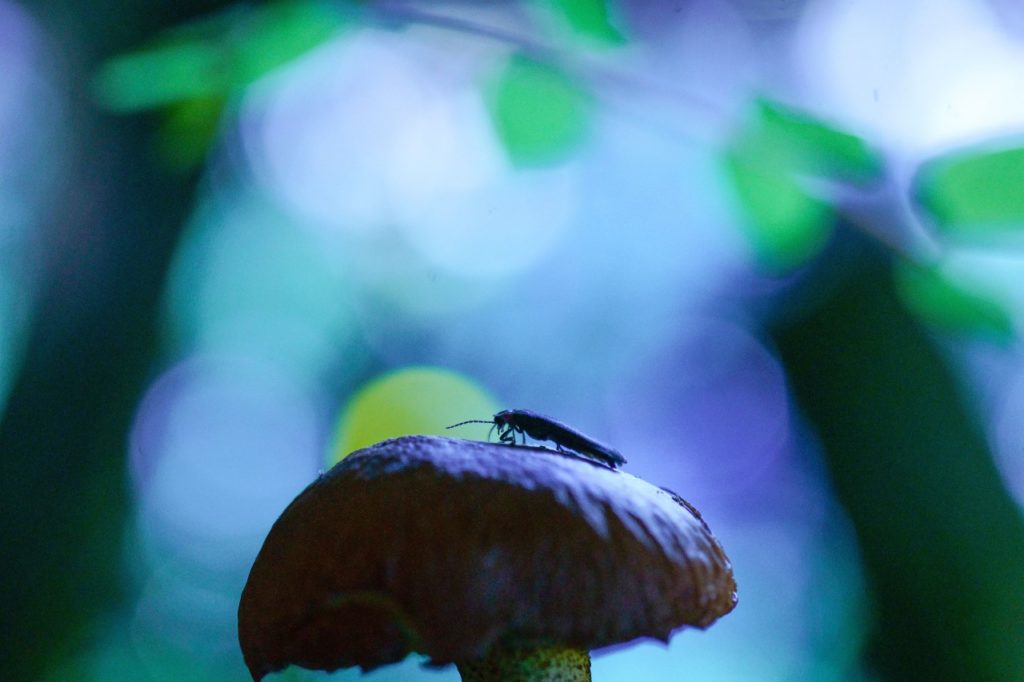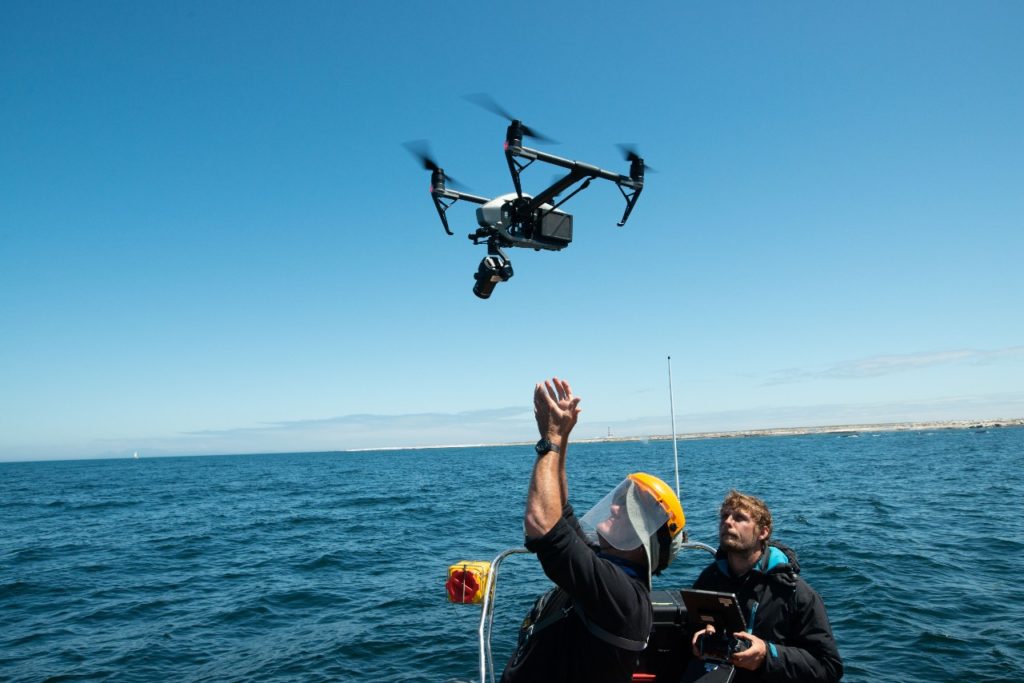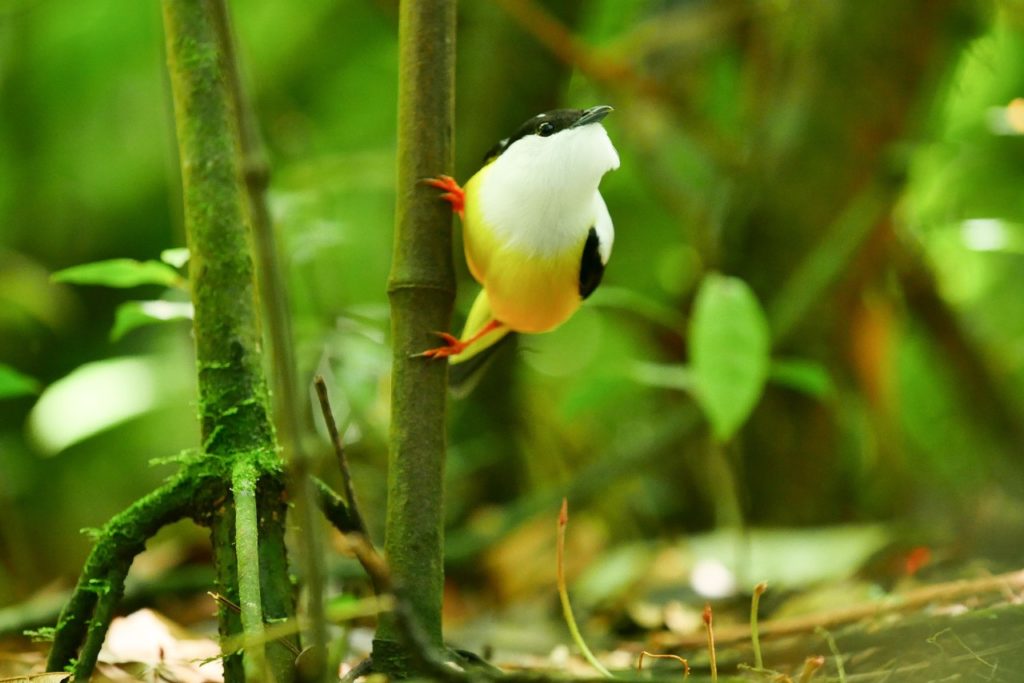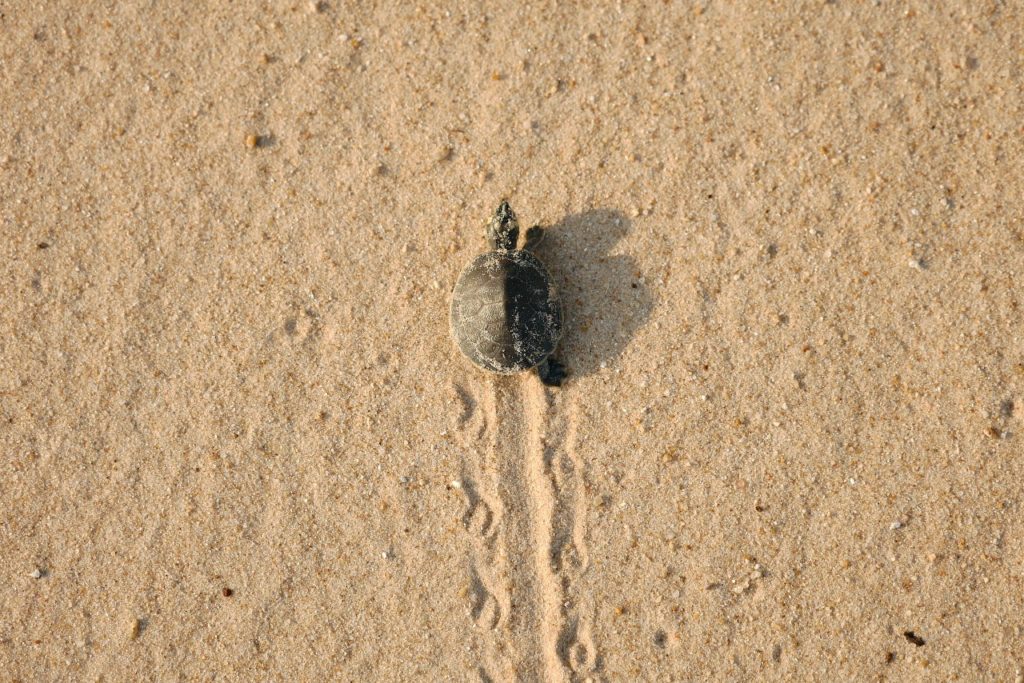Did you know that there is a vampire spider that must drink the blood of a human in order to impress his mate? What about the anole lizard who has adapted itself to breathe underwater; not with gills, but rather an innovative scuba system where the body traps and pushes air bubbles to its head, creating an ‘air helmet’ of sorts? But wait, we haven’t even got into the synchronous fireflies, glow-in-the-dark squirrels, talking trees, and honey bees that dispatch their enemies by cooking them alive.
These and many other incredible stories are all a part of Disney+ / National Geographic and their new series, SUPER/NATURAL, streaming on Disney+ this month starting September 21st. It is being brought to you by the work of James Cameron, Tom Hugh-Jones (the innovative Creative Director at Plimsoll Productions), and the smooth voice of Benedict Cumberbatch.
“If you think you know nature,” Mr. Cumberbatch quips at the intro. “Think again.”
There are six episodes this season, each episode featuring several stories, each seemingly more fascinating than the next. But it is the technology used to view these super creatures in live-action that may be the most amazing of all. And that is the point behind this series—not to just go behind the scenes, but also into the bodies of these creatures so that you can witness these events from their own perspective. And Disney+ and Executive Producer, Tom Hugh-Jones, has succeeded brilliantly with each story that has obviously been chosen carefully for its wow factor, the challenge in capturing, and ultimate satisfaction value.
Today, we speak with Tom Hugh-Jones about the concept, technology, and extreme difficulty in bringing this entire series to life:
Urbasm: First allow us to congratulate you, Tom. This has been one of our favorite features we’ve watched on Disney+ this Summer.
Tom Hugh-Jones: Thank you.
Urbasm: In your own words, how would you describe what this series is all about?
Tom Hugh-Jones: I think this is the nature series that shows you things you can’t usually see just by looking or filming it. This is the series that sets out to reveal the unseen powers of animals and plants. We use all sorts of modern technology, like ultra-high-speed, ultra-low light, ultraviolet… (laughs) all ultras. We use thermal imagery, drones, you know, whatever we can to give you a new perspective on the natural world and show you the extraordinary ability of animals that are kind of beyond our perception.
Urbasm: Tom, can you offer us some examples from the films of how that technology was used?
Tom Hugh-Jones: Yeah, that was one of the major aims of the series, was to work out how we could use camera technology to reveal things that were beyond the perception of the human eye. So, for example, we filmed Japanese honey bees killing hornets, invade their nests, and the way that they do it is by vibrating their bodies to raise the temperature. They can survive a slightly hotter temperature than the hornets can. So, we used thermal cameras to reveal that.
Urbasm: Yeah, they cooked them alive in their own nests.
Tom Hugh-Jones: We used ultra-high-speed to show the dance of the manakin bird. I don’t know if you’ve seen that. When you see it in real-time it just looks like—well, it just looks like a bird really, just hopping around. You slow that down and you realize that they are doing these incredible flips in the air, and they are also cracking their wings together to make the sounds. I guess that was the real sweet spot for us, using this technology to show you things that would totally blow your mind—that you would never guess was going on.
Urbasm: What would you consider to be a few of the other standout stories in this series, both in the research behind the discovery and the process of getting the right shots?
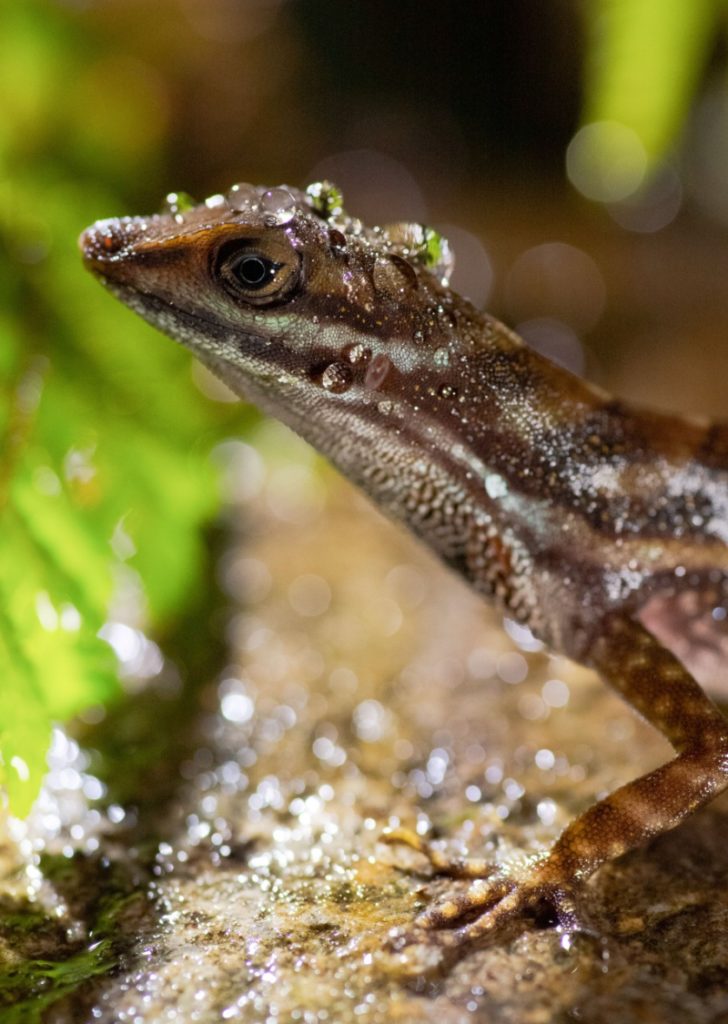
(National Geographic for Disney+/Robin Cox)
Tom Hugh-Jones: Well, one of the ones we’re really proud of is the Anole Lizards. It is a story about a little Anole lizard that lives in central America and has this extraordinary ability to escape predators by diving underwater and then channeling these air bubbles that get trapped on its scales up towards its head and make this kind of bubble helmet.
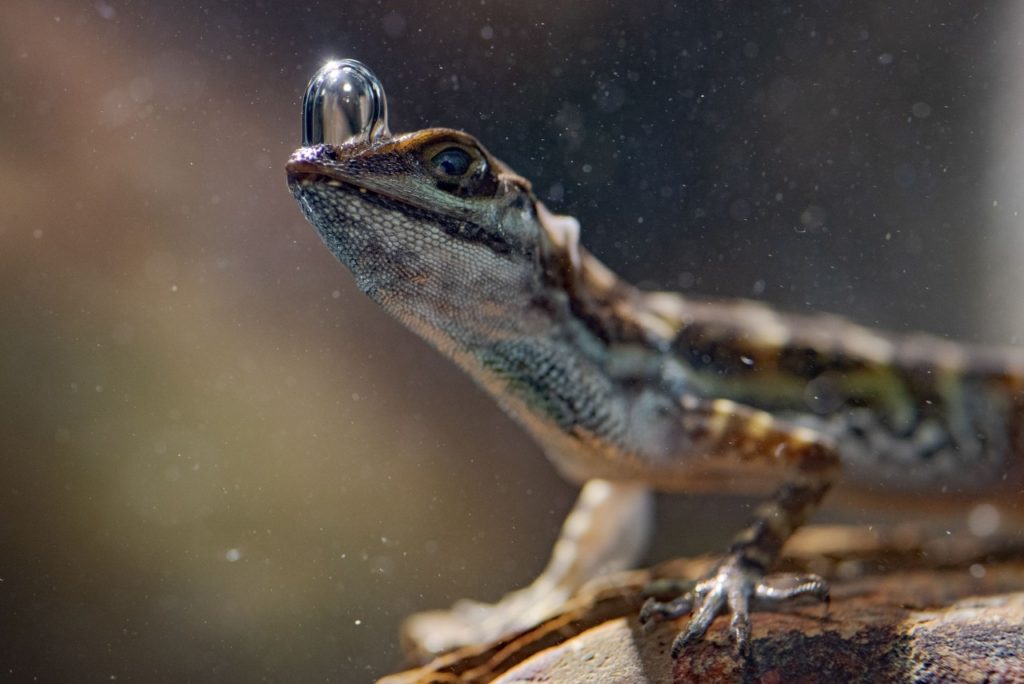
(NationalGeographic for Disney+/Robin Cox)
Tom Hugh-Jones: While the animals are trying to hunt it on the land, it’s sitting underwater and they think it is going to come up sometime soon, but after 20 minutes they get bored.
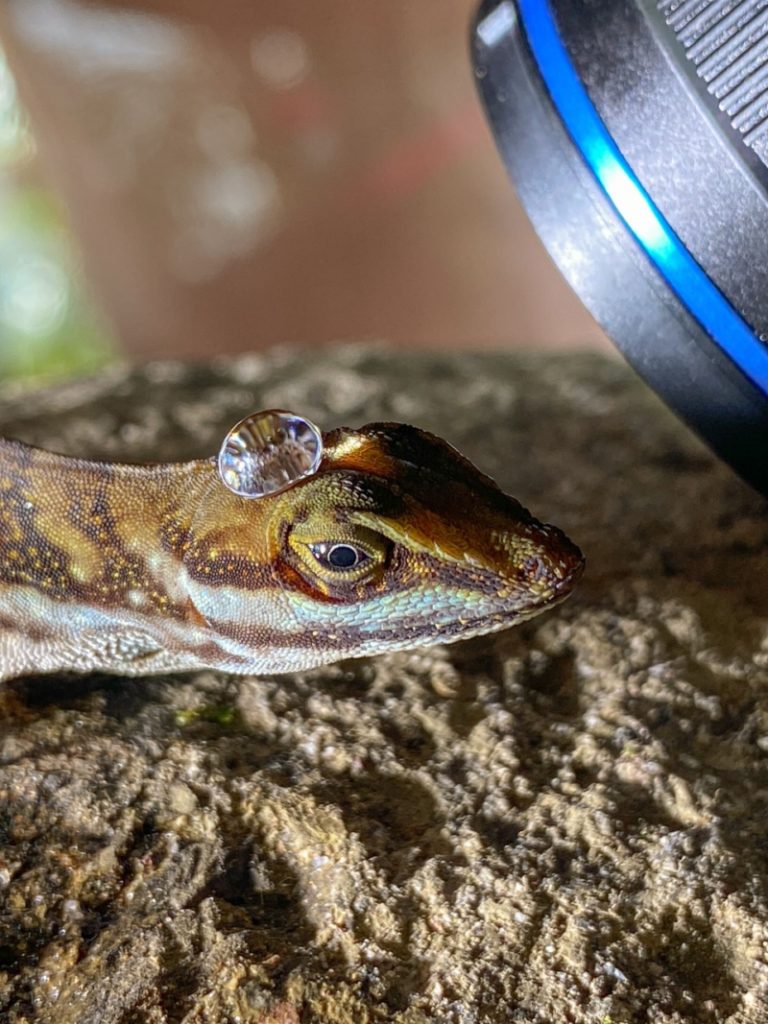
(National Geographic for Disney+/Robin Cox)
Tom Hugh-Jones: That was pretty extraordinary, and it was pretty hard to film.
Urbasm: How a cameraman can get that close for a shot is amazing in itself.
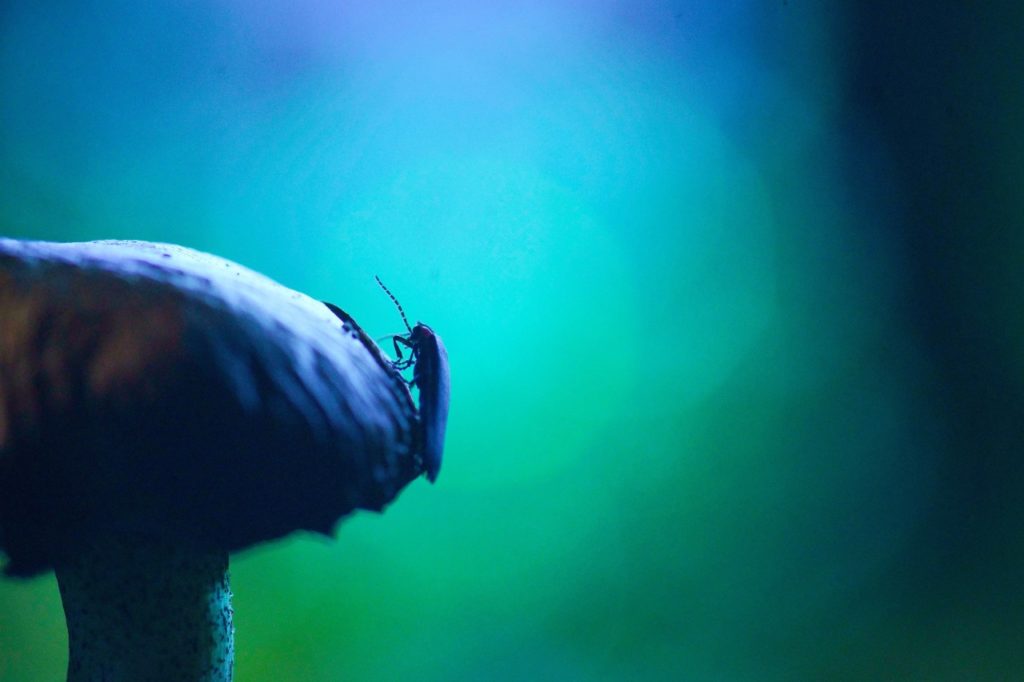
(National Geographic for Disney+/Alec Davy)
Tom Hugh-Jones: We went to Mexico and filmed these synchronous fireflies that had never been shown on the telly before, which is kind of more amazing than any other firefly sequence that I have ever seen before. And this wouldn’t have been possible to capture until about 2 years ago and the latest generation of low light cameras had come out. We filmed the sequence that I had always wanted to film since I found out about it. The vampire spider, did you see this one?
Urbasm: Oh yeah, we did.
Tom Hugh-Jones: Which is extraordinary. You could not make that up, could you?
Urbasm: No.
Tom Hugh-Jones: The spider must catch a mosquito that’s drunk the blood from a human… and then cover itself with its blood just to win a mate.
Urbasm: (laughs)
Tom Hugh-Jones: There are a lot of sequins in here that I did not know about until our researchers picked them up. I thought that I’d seen most things in the natural world, but this really takes it to the next level.
Urbasm: Where did you find this sort of little-known research?
Tom Hugh-Jones: We’ve got a really dedicated team of producers who spend their time phone bashing, speaking to scientists, naturalists, and other filmmakers to see if there is anything. Kind of trolling the internet of all the research and paper that are out there, and we slowly try to whittle down what we think are the most extraordinary stories. But not just extraordinary; the ones we felt we could bring to life in a new way, whether it was using camera technology or effects that show that there is something more going on than what first meets the eye.
Urbasm: Were each of these stories specifically filmed for this series?
Tom Hugh-Jones: These were all made specifically for this show.
Urbasm: Well, that was a huge undertaking considering the detail that each of these stories contains. What is the size of a crew that went out to each one of these stories would you say?
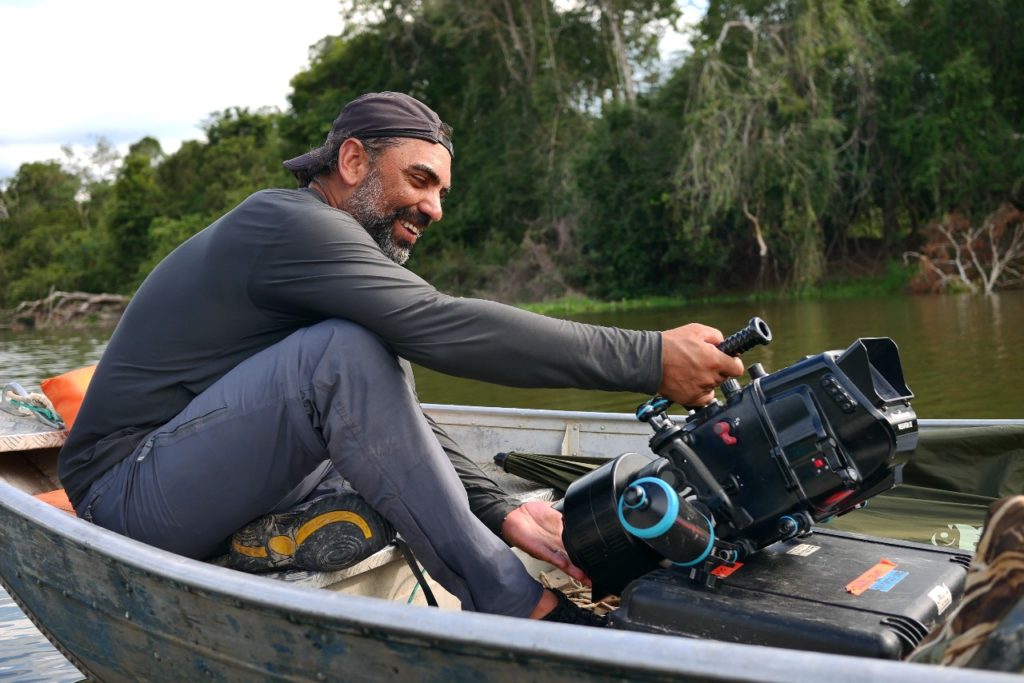
(National Geographic for Disney+/Lillian Todd-Jones)
Tom Hugh-Jones: The more technology that we take out into the field, the more crew you need. We used to just go out with you know, a cameraman and a director, but now you want to take the drones, special low light cameras, so you need to take more experts. But we’re still pretty light on the ground I would say.
Urbasm: Okay.
Tom Hugh-Jones: The one thing with animal behaviors is you never know when it is going to happen. Most wildlife teams try to maximize the time they can spend in the field, so the less you are spending on crew members, also accommodation, and food. Everyone is just so determined to get that behavior that they are trying to capture, so, we try to keep it small and streamlined so that we can be there for longer and have a greater chance of getting those amazing shots.
Urbasm: Well it worked brilliantly, Tom. We can’t wait for the next season.
“Super/Natural“ is now streaming on Disney+. Don’t miss it!
Here is a sneak peek:
Top Photo Credit: Fireflies on Fungus in the darkness of the Comite Ejecutivo De Piedra Cante forest.
(National Geographic for Disney+/Alec Davy)
About Dr. Eric J. Leech
Eric has written for over a decade. Then one day he created Urbasm.com, a site for every guy.
